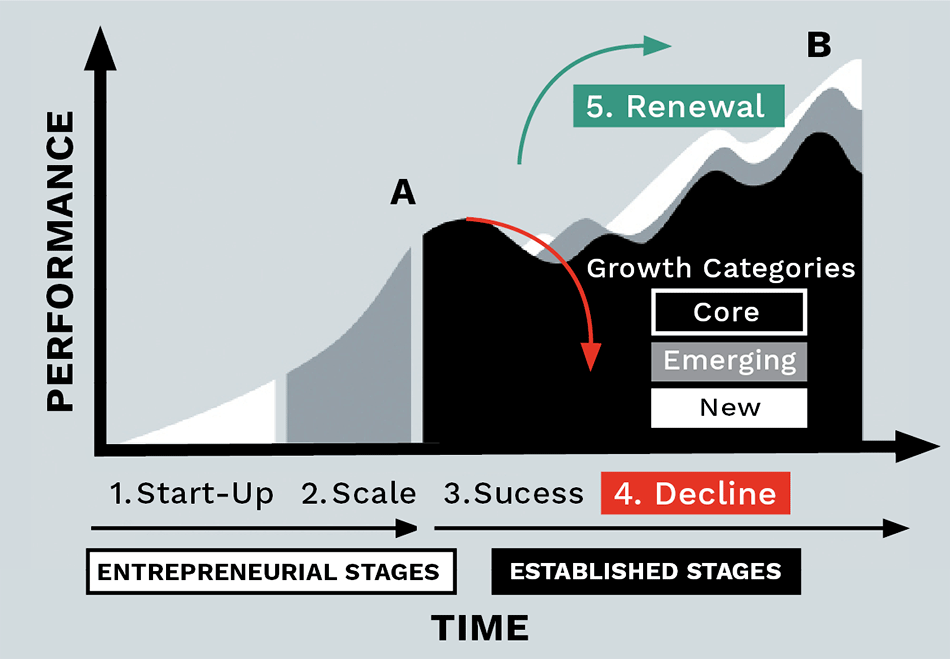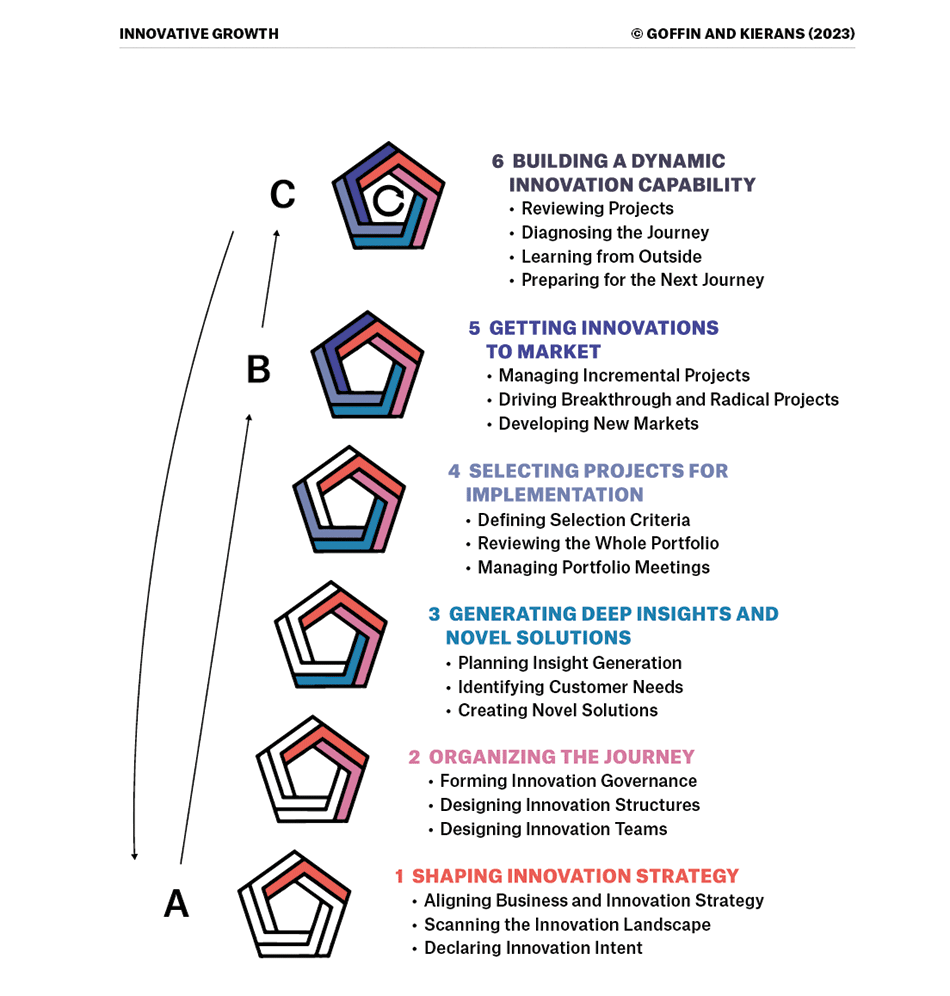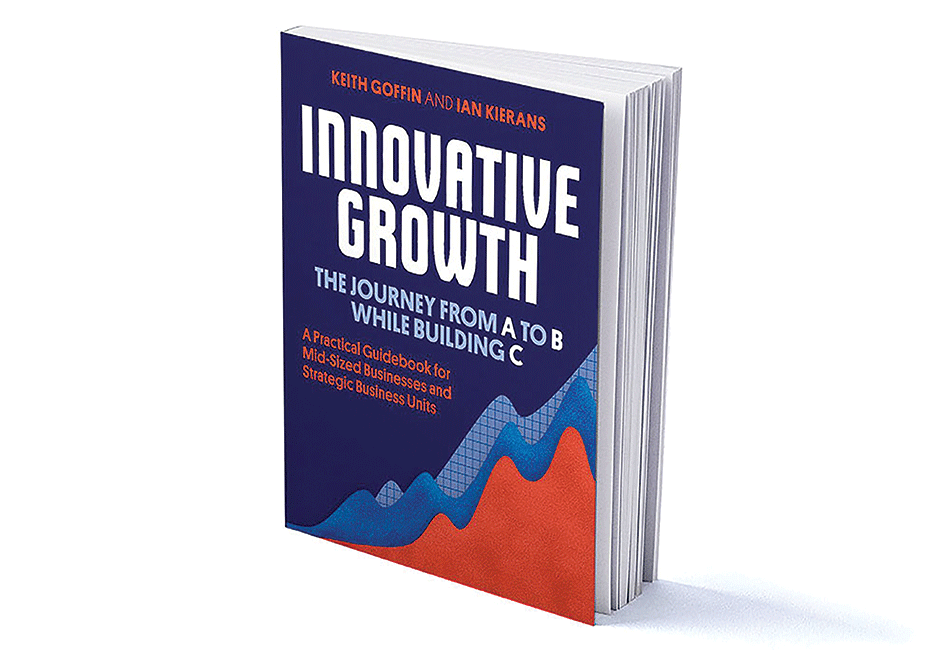By Keith Goffin and Ian Kierans
It’s clear that establishing a successful business calls for a high degree of innovation. But does the work end there? Keith Goffin and Ian Kierans believe that the journey to innovative growth involves more than products and financial performance: it must also build competences and capability.
Innovation has become synonymous with business growth. Yet, research consistently shows that established businesses that have innovated in their core markets in the past will struggle to become innovative again. Businesses underestimate the effort required to build innovation capabilities; sales of new products stall, penetrating new markets is difficult, and success with innovation is elusive.
In contrast, there are also companies with the rare capability to innovate time and time again. In the past 30 years, we have researched how businesses have used innovation to boost growth. Consider AB Ludvig Svensson, a Swedish manufacturer of specialist screens for greenhouses, which faced strong competition from Asian copycat products. Now, it has the capability to identify customer needs, create new markets, and segment existing markets in novel ways (see box case study). Another example from our research is Welsh-based EuroCaps, which has gone from being a contract manufacturer of commoditised products (such as cod liver oil capsules) to becoming a highly respected player in designing and manufacturing complex capsules for well-being products. Similarly, Patagonia has become a legend in the outdoor industry for not only developing technologically advanced, sustainable products but also building an entire organisation that safeguards sustainability through profits. Ironically, as most other businesses grow, they forget how to innovate.
Black and white mistake

Businesses go through four stages of development. The first two stages are entrepreneurial: start-up and scale (diagram 1). Start-ups grapple to establish themselves in white space – new, poorly defined markets without established business models. For start-ups, survival depends on radical thinking and experimenting with different innovations, often enabled by new technology, to address customers’ unmet or poorly met needs. Once a start-up discovers a viable value proposition, its business model solidifies and its target market becomes familiar (thus transitioning to grey space). As a business scales, its energy is consumed by the trials of growing the business, including efforts in sales, marketing, operations, and order fulfilment. Tackling these functional processes inevitably means that radical innovation capabilities become neglected.
At the success stage, a business has built its functional expertise in serving core markets, which are now so well defined and familiar that they can be termed black space. Innovation within black space becomes largely incremental. At the top of the business life cycle, a company’s performance and margins draws relentless competition and, if the company cannot innovate, decline becomes inevitable. The problem is that the innovation capabilities required have eroded during the growth cycle.
For business renewal, a new cycle of growth, in black, grey, and white space, is required in order to take business performance from A to B (green arrow). Businesses naturally want to defend their core markets; growth in black space requires novel product or service innovations that combat price competition. Different capabilities are essential to grow in grey and white space. Here, businesses must generate deep customer insights and experiment with breakthrough innovation. White space is where, potentially, the biggest growth can be generated long-term. It commands new-to-world innovations and business models that can create entirely new markets or disrupt existing ones.
Most organisations make the mistake of treating black, white and grey space equally, whereas innovating in unfamiliar grey space or unknown white space requires a different level of capabilities. So, leaders and managers must concentrate on performance and the capabilities that underlie innovative growth.
Innovation as a journey

Leading businesses move smoothly from performance A to B. To succeed in grey and white space, they (re)build the sort of innovation capabilities (C) they possessed as a start-up. Our research shows that, to do this, businesses must pass through 5+1 phases (diagram 2):

- Phase 1 is shaping innovation strategy. This includes identifying business opportunities in existing and potential markets and declaring growth goals.
- Phase 2 is organising for the journey, assigning the responsibilities, and forming innovation teams. The focus is on developing individuals’ innovation competences, and businesses should plan carefully and not rush blindly onwards.
- Phase 3 includes training and assigning teams to investigate potential markets, while generating deep customer insights and novel ideas for solving customers’ problems.
- Phase 4 ensures that the most appropriate projects are selected from the portfolio of ideas generated. The output of this phase should be a balanced set of projects, in black, grey, and white space.
- Phase 5 is driving the selected projects to launch and market success. As some innovations will be launched in emerging or new markets, this phase must include market development.
- Phase 6 should be considered as ‘5+1’, as it is not directly about generating innovation performance but, instead, about embedding capabilities, C. The goal is to build a business that can innovate time and time again, in black, grey, and white space, including volatile markets.
Case Study: AB Ludvig Svensson’s Innovation Journey
Svensson has 420 employees and a turnover of over €80m and sells its products in 130 countries. It designs and manufactures greenhouse screens that control sunlight, maintain temperature, reduce heating costs, and prevent crop-damaging condensation. Svensson has become market leader but many of its products have been ruthlessly copied. CEO Anders Ludvigson says, “To counter the competition, we had to change our way of thinking and focus on the voice of the customer – VOC.” Anders and his team designated black-, grey-, and white-space markets to investigate (Phase 1), including screening products for emerging markets and specialist greenhouse crops.
Svensson’s R&D is led by Per Holgerson: “In a small company like ours, getting better at innovation is a long journey. There is a lot of capacity for innovation but it is spread out. An appropriate structure is needed to connect the individuals, who are our ‘islands of innovation’.” Per created task-focused teams to conduct VOC work (Phase 2) and these teams spend time observing, first-hand, the challenges customers face and generating innovative solutions (Phase 3). Deep customer insights have helped improve current products and have radically changed Svensson’s approach to marketing. Opportunities in existing markets have been identified that had not been recognised before. Through differentiated products, specific packaging, the right pricing, and novel approaches to sales, Svensson segmented in significantly different ways. And, from a new-products perspective, Per emphasises the value of customer insights: “Our whole future product portfolio is based on ideas from our insight work” (Phases 4 and 5).
Svensson’s innovation journey is far from over. CEO Anders has a healthy impatience when it comes to innovation. He has ambitious growth plans and says, “Although we have learnt a lot and have an excellent product pipeline, our challenge now is to make each idea into a big market success. And even when that has been achieved, our innovation journey will still need to continue” (Phase 6).
Every phase is essential and needs to carefully build on the preceding one (indicated by the colour-coded pentagons on diagram 2). Each of the five phases will have built some innovation capabilities but these need to be consolidated in the sixth phase. It might sound simple but the advantage of treating innovation as a journey is that it gives management a clearer, broader remit. And it defines the challenge clearly: create new products, create new markets, and create new capabilities.

The new book Innovative Growth – The Journey from A to B While Building C is published by Rheologica: Stockholm, Sweden, 1st Edition 2023, ISBN 978-91-87791-32-1. It includes 24 original case studies illustrating how businesses have built innovation capabilities. Six case studies demonstrating the 5+1 phases of the innovation journey will be published by the European Business Review in coming months.
This article was originally published on 3 October 2023.
About the Authors
 Keith Goffin is an emeritus professor, thought leader, and management consultant, who teaches at leading business schools around the world. He has published numerous academic papers and four books, and is an expert on identifying customers’ hidden needs.
Keith Goffin is an emeritus professor, thought leader, and management consultant, who teaches at leading business schools around the world. He has published numerous academic papers and four books, and is an expert on identifying customers’ hidden needs.
 Ian Kierans is an organisational psychologist, with a PhD in strategy and innovation management. He is CEO of Advanced Organisation, a leading management consultancy that supports businesses to develop growth strategies, build new markets, and create an authentic culture of innovation.
Ian Kierans is an organisational psychologist, with a PhD in strategy and innovation management. He is CEO of Advanced Organisation, a leading management consultancy that supports businesses to develop growth strategies, build new markets, and create an authentic culture of innovation.



































